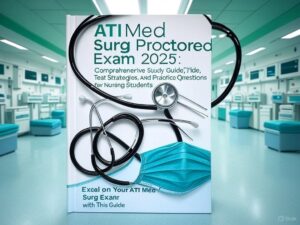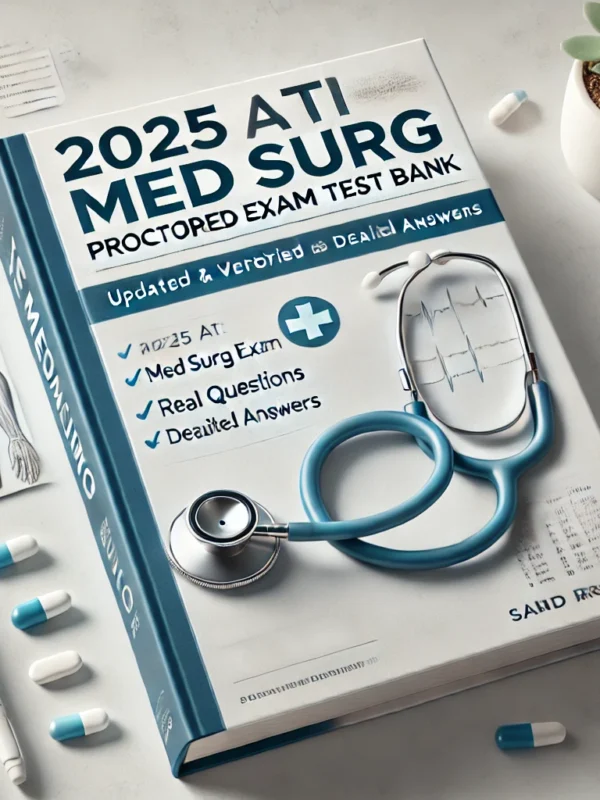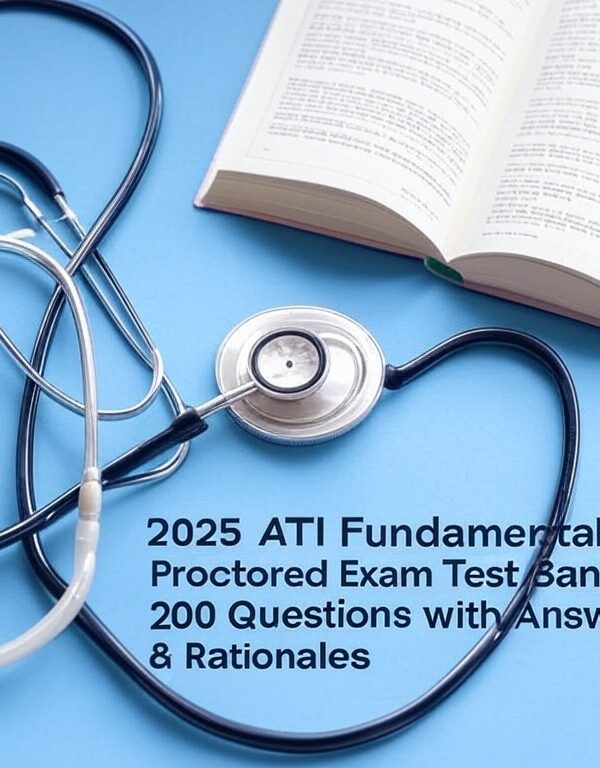-
Comprehensive study guide for ATI Med Surg 2025
-
Proven test strategies and practice questions
-
Focuses on medical-surgical nursing concepts
-
Ideal for nursing students preparing for the proctored exam
-
Enhances critical thinking and exam readiness
Preview
1. A nurse is caring for a client who experienced a traumatic head injury and has an
intraventricular catheter (Ventriculostomy) for ICP monitoring. The nurse should
monitor the client for which of the following complications related to the
ventriculostomy?
a. Headache
b. Infection
c. Aphasia
d. Hypertension
Correct Answer: b. Infection
Rationale: Infection is a major complication related to ventriculostomy due to the
invasive nature of the catheter and the risk of introducing pathogens into the central
nervous system. Strict aseptic technique is required to prevent meningitis or other
serious infections.
2. A nurse is providing education to a client who is to undergo an EEG the next day.
Which of the following information should the nurse include in the teaching?
a. “Do not wash your hair the morning of the procedure.”
b. “Try and stay awake most of the night prior to the procedure.”
c. “The procedure will take approximately 15 minutes.”
d. “You will need to lie flat for 4 hours after the procedure.”
Correct Answer: b. “Try and stay awake most of the night prior to the procedure.”
Rationale: Staying awake before the EEG increases the likelihood of abnormal
electrical activity being detected during the procedure. The goal is to stress the brain by
sleep deprivation.
3. A nurse is caring for a client who is postprocedural following a lumbar puncture
and reports a throbbing headache when sitting upright. Which of the following
actions should the nurse take? Select all that apply.
a. Use the GCS scale to assess the client
b. Assist the client into a supine position
c. Administer an opioid analgesic
d. Encourage the client to increase PO fluid intake
e. Instruct the client to perform coughing and deep breathing
Correct Answers: b. Assist the client into a supine position, d. Encourage the client to
increase PO fluid intake
Rationale: A headache after a lumbar puncture is often due to CSF leakage, and
positioning the client supine can alleviate the headache. Increasing fluid intake helps
replace lost cerebrospinal fluid, reducing the headache. Analgesics may be used for
pain management, but deep breathing and coughing should be avoided as they may
exacerbate the headache.
4. A nurse is caring for a client who has continuous bladder irrigation following a
transurethral resection of the prostate (TURP). Which of the following findings
should the nurse report to the provider?
a. Output equal to the instilled irrigate
b. Client reports bladder spasms
c. Viscous urinary output with clots
d. Reports of strong urge to urinate
Correct Answer: c. Viscous urinary output with clots
Rationale: Bright red urine with clots could indicate arterial bleeding, which requires
immediate intervention. Viscous output may suggest clot formation or a potential
blockage that needs attention.












Reviews
There are no reviews yet.